Teaching correct pencil grip to preschoolers is a necessary role of early childhood educators. As an early learner, using our hands and fingers effectively is an essential skill and it continues in life in various ways. Correct pencil grip is a crucial skill that kids need to develop in order to be successful students. Before our little ones start writing letters and numbers, they need to develop the small muscles of the hands and fingers to withstand lengthy writing assignments. A functional grasp of any writing tool is essential for writing confidence and success.
Typically, between ages three and five, children will demonstrate readiness to grasp a pencil effectively. A correct pencil grip is one that allows the most finger movement, and the least strain on the muscles of the hand. These are fundamental qualities when learning to draw, color, and write.
Grip Development
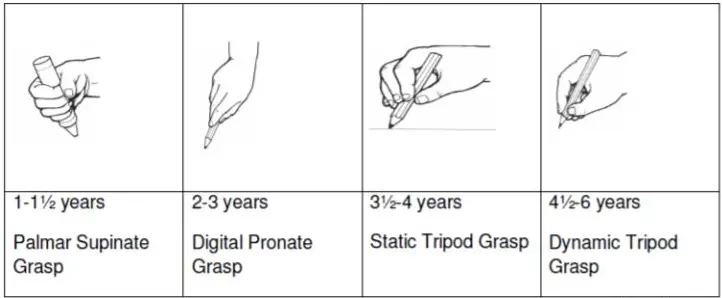
Generally, the development of pencil grip in young children follows a predictable routine in typically developing children. Children between ages one and one-a-half begin holding a writing tool with their whole hand. Later, between the ages of two and three, children hold a crayon with the palm facing down (pronation) and use the shoulder to move the crayon. Around age three, children start to use a more mature finger grasp on a pencil.

Preschoolers around three to four years old demonstrate a static tripod grasp. Tripod grasp is a 3-finger grip. The child holds a pencil with pads of his/her thumb and index fingers while the pencil rests on the side of the middle finger. The ring and pinky fingers are tucked into the palm for stability. The movement for drawing comes from the hand and wrist, while the fingers remain firm and static. The elbow and forearm progress slowly from moving freely in the air to resting at the table for support.
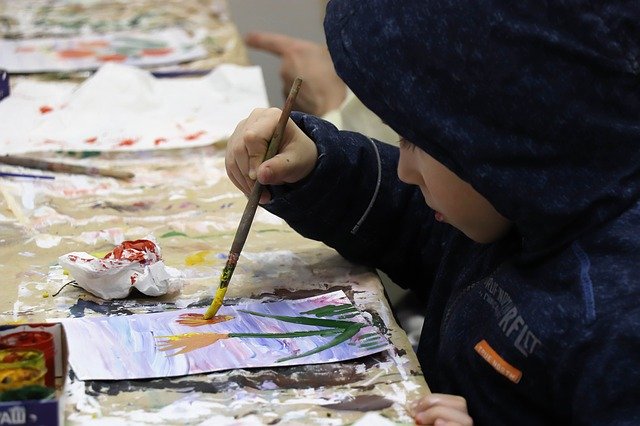
By the age of six, the pencil grip is mature and fully developed. The most sophisticated and efficient grasp is a dynamic tripod grasp, and most adults use it. It is a 3-finger grip. The thumb and index fingers control the pencil while it rests on the side of the middle finger. The index and thumb form an open circle (webspace) while grasping the pencil. The ring and pinky fingers are tucked into the palm. The movement for drawing and writing comes from the thumb, index, and middle fingers. The forearm and wrist rest on the table for support.
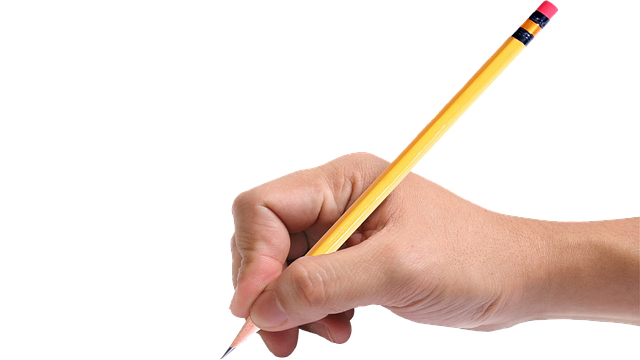
Pencil Grip Research
As parents, educators, and therapists, we must teach and monitor preschoolers on how to hold pencils correctly. Most kids will demonstrate a natural fine-motor ability to hold crayons properly. However, some children will need help learning how to hold a crayon functionally. Many young children might exhibit immature, awkward, or fisted grips and require an adult’s assistance to correct pencil grasp and introduce good habits.
For example, a research study on the developmental progression in pencil grips investigated 326 Taiwanese children aged 2.5 to 6.4 years finds:
“A developmental progression was noted, and 14 grip patterns were identified. About half of the 3- to 3.4-year old children were able to employ a mature grip when drawing in a 7.89 cm x7 cm box. By the age of 4, about three-fourths of the children were able to use mature grips to draw. For children aged 5 years and older, the percentage increased to more than 90%.”
A study conducted by Schneck and Henderson investigated the developmental grip progression of typical American children aged 3.0 to 6.11 years. Research suggests that Taiwanese children 3.5 to 5.9 years of age are more advanced than American children of the same age.
“Forty-eight percent of the youngest group used mature grips, compared with 90% of the oldest children.”
Another research study completed by Schneck suggests that first graders with handwriting difficulties demonstrate a less mature grip as compared to the first graders without handwriting problems.
To learn if your child is ready to write letters please click here.
Importance of Teaching Correct Pencil Grip
Regardless of developmental progression in pencil grip advancement between Taiwanese and American children, the pencil grasp in young typically developing children follows a predictable sequence. Studies suggest that about 90% or more of young children will develop a mature pencil grip. However, the correct pencil grip has to be taught to all children. Undoubtedly, about 10% of our children will need additional time and instruction to demonstrate the proper crayon grip. Children with delays and learning challenges might need direct specialized instruction and individualized strategies to master the correct pencil grip.
Preschool Pencil Grip Teaching Strategies
- Demonstrate correct grip
- Teach the name of the fingers and use consistent terminology (i.e., thumb, pointer, and tall man)
- Review placement of the fingers on the writing tool
- Physically correct pencil grip if a child has difficulty self-correcting
- Practice proper grip before coloring and drawing tasks
- Drop and pick up a pencil a few times to increase finger placement practice
- Use small writing tools
- Short and broken crayons are the best and ideal writing tools for little hands, as they create natural resistance for increased hand strength
- Golf-size pencils, which are short are more comfortable for small hands to manipulate
- Short chalk
- Rock-shaped crayons and chalk
- Small markers
- Encourage the use of the vertical surfaces, such as easels, to promote wrist movement for increased pencil grip control
- If a child has difficulty tucking ring and pinky fingers into the palm while holding a crayon, place a pom-pom, cotton ball, or small bead for the child to hide with these two fingers.
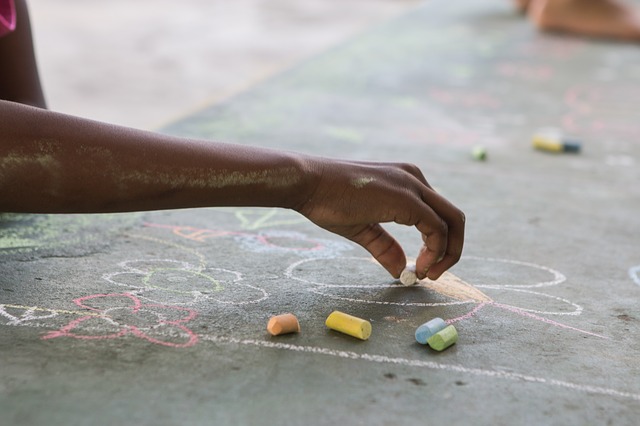
Therefore, early childhood is a crucial time for fine motor skills that require new dexterity levels and take several years to develop. Activities that translate into significant growth for efficient finger grasp on writing tools are tasks that encourage in-hand manipulation, finger isolation, precision, and coordination. Furthermore, the ability to use different amounts of pressure and developing strength in wrists, hands, and fingers are critical components for functional and correct grip success.
Quick Preschool Pencil Grip Activity List to Enhance Grasping Skills
- Pick up small objects with fingers (sorting coins, beads, buttons and more)
- Tactile awareness activities (explore textures like finger paint, shaving cream, glue and more)
- Squeeze and manipulate (spray bottle, clothespins, sponges, etc.)
- Fingerplays and songs
- Manipulate switches, latches, keys, handles, nuts, and bolts.
- Open and close lids, twist/untwist
- Wind-up toys and spinning tops
- String and lace
- Play with play-dough, clay, and putty.
- Pick up small items with tweezer and tongs.
To learn more about fine-motor preschool activities please click here.
Help your child strengthen their hands please read Activities to Improve Hand Strength in Children.
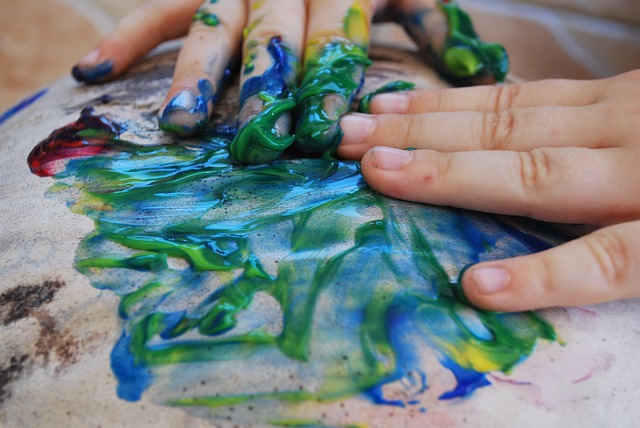
Conclusion
Children are required to develop a combination of skills that contribute to correct pencil grip. It is crucial to teach our preschoolers how to grasp writing tools efficiently. Children benefit from specific lessons on how to demonstrate an appropriate pencil grip, and should not be expected to learn it independently. By providing teaching strategies and monitoring crayon grip during early childhood, children will create good habits for efficient grip patterns. Consequently, the pencil grasp will be mastered and will become unconscious. A child will feel confident and prepared to undertake demanding writing tasks. Conversely, a child who demonstrates immature or awkward grasp patterns might result in fatigue, frustration, and lack of confidence when tasked with written assignments. As parents, educators, and therapists, we need to focus on building correct pencil grasps right from the start!
If you enjoyed this article, please share it with a friend!
References
Schneck, C., and Henderson, A. (1990). Descriptive Analysis of the Developmental Progression of Grip Position for Pencil and Crayon Control in Nondysfunctional Children.
Schneck, C. (1991). Comparison of Pencil Grip Patterns in First Graders with Good and Poor Writing Skills.
Tseng, M. (1998). Development of Pencil Grip Position in Preschool Children.

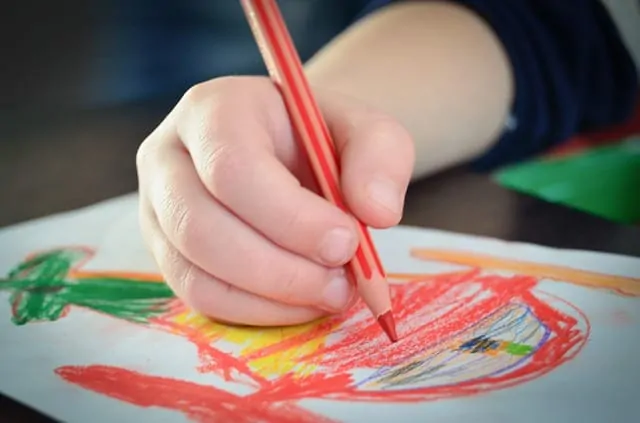
Yes! Pencil grip is so important! I wish someone could give me this advice a few years ago when my kids were younger. Now, my daughter has difficulty correcting her grasp. Unfortunately, not all teachers help kids with the correct position of their pencil. And, often teachers have more influence teaching children than parents. Great article Adriana Stapella!
Thank you for your insight.